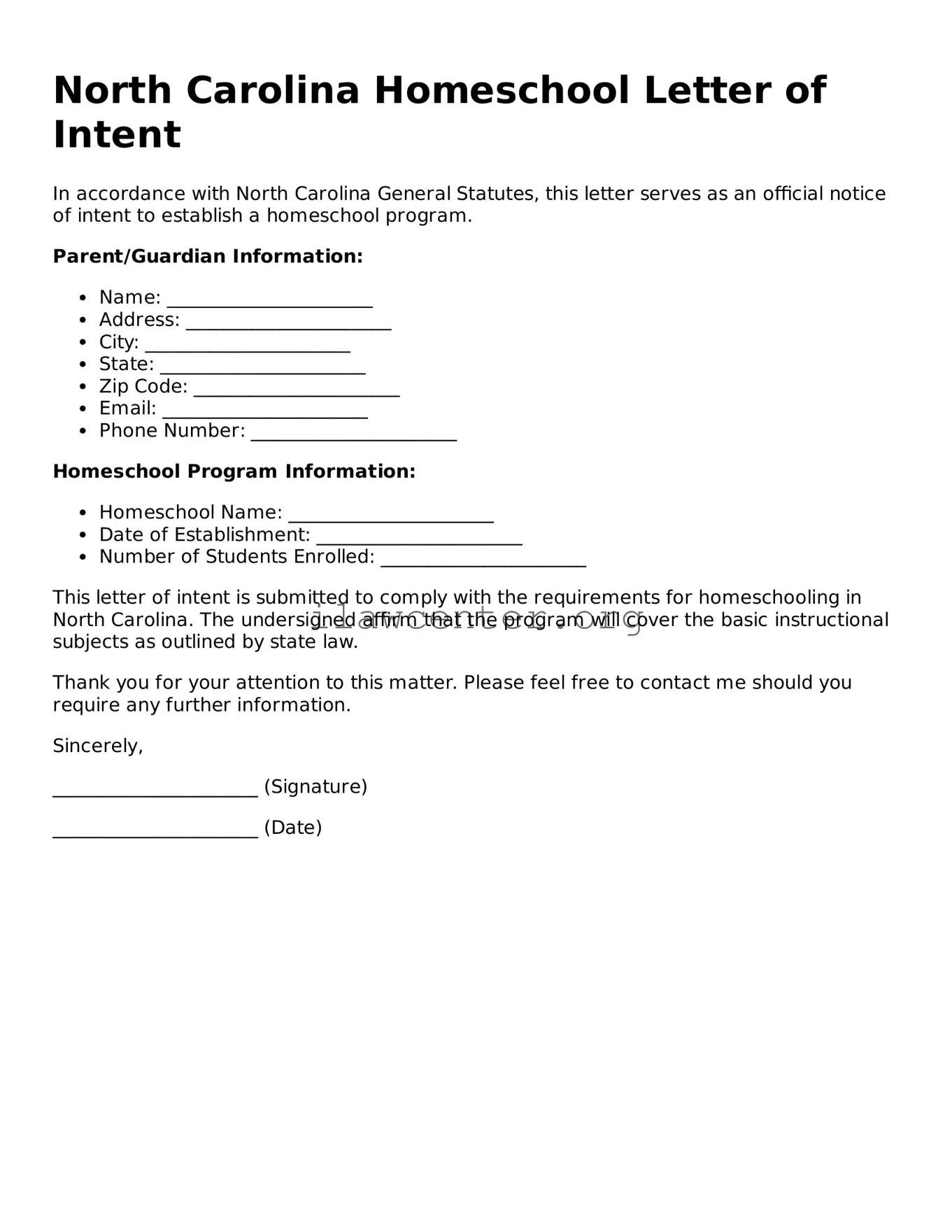Filling out the North Carolina Homeschool Letter of Intent form can be a straightforward process. However, there are common mistakes that families make which can lead to unnecessary complications. One important mistake is forgetting to include all required personal information. Parents should make sure to provide full names and addresses, as well as the ages of all children to be homeschooled. Omitting any of this information can delay the approval process.
Another frequent mistake is not submitting the form on time. The law requires that the letter of intent be filed within 30 days of beginning homeschooling. Failing to meet this deadline can lead to compliance issues. Additionally, parents sometimes assume that once they submit their intent, they do not need to update it if there are any changes. However, if there are changes in the educational program or personal details, timely updates are crucial.
Some people confuse the requirements for different states. Understanding that this form specifically relates to North Carolina is vital. Each state has its own regulations concerning homeschooling, and what works in one state may not apply here. Not following state-specific guidelines can lead to misunderstandings about homeschooling legality.
Another area where individuals stumble is the signature section. Parents often forget to sign the form. Missing a signature, whether by the parent or guardian, can render the form invalid. Therefore, double-checking that all signatures are present before submission is essential.
Moreover, the method of submission can also pose a challenge. Some families opt to send their forms through standard mail without checking the delivery method. This can lead to delays or non-receipt by the authorities. Using a trackable mailing method helps ensure the form arrives safely.
Parents may also underestimate the importance of keeping a copy of the submitted form. Not having a record can create issues later, especially if there are questions regarding the status of the application. Keeping personal copies safeguards against potential misunderstandings.
Additionally, many overlook the requirement to establish an educational plan. While the Letter of Intent does not demand a detailed curriculum, it should include an indication of the subjects to be taught. Lack of a clear plan can raise red flags during potential reviews.
Lastly, not seeking guidance from easily accessible resources can lead to mistakes. Many local homeschooling associations offer support and information on how to fill out the Letter of Intent accurately. Engaging with these communities can provide valuable insights and help avoid common pitfalls.
